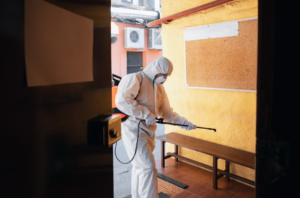More people want to live and work in buildings that are good for the planet, and eco-friendly buildings are becoming very popular. However, they also bring new challenges for building inspectors.
What are eco-friendly buildings?
Eco-friendly buildings are made to use less energy and water. They often use materials that are better for the environment. These buildings might have solar panels, green roofs, or unique windows that keep heat in or out. The goal is to reduce harm to the planet while still being comfortable for people.
Why do we need new inspection practices?
Traditional building inspections focus on safety and essential functions. However, eco-friendly buildings have new features that need to be checked. Inspectors must learn about these new technologies and materials. They need to make sure these green features work well and are safe.
New things to inspect in eco-friendly buildings
- Energy systems – Many green buildings use solar panels to generate their power. Inspectors need to check whether these systems are set up correctly and working safely.
- Water-saving features – Green buildings often have systems to collect rainwater or reuse grey water.
- Green roofs – Some buildings have plants growing on their roofs. This helps keep the building cool and manages rainwater. Inspectors must check if the roof can hold the weight and is watertight.
- Unique materials – Eco-friendly buildings might use new insulation or recycled materials. Inspectors need to know if these are safe and meet building codes.
- Intelligent systems – Many green buildings have computer systems that control heating, cooling, and lighting. These systems need to be checked to ensure they work properly and are secure.
Inspectors are adapting
- New training – Many inspectors are taking classes to learn about green buildings and how to check them.
- Using new tools – Some inspectors use drones, thermal cameras, and other high-tech tools to check hard-to-reach or hidden parts of buildings.
- Working with experts – For very complex systems, inspectors might collaborate with specialists who are knowledgeable about specific green technologies.
- Updating checklists – Inspection forms and checklists are being changed to include checks for eco-friendly features.
- Focusing on performance – Instead of just looking at how things are built, inspectors check how well green features work.
Future of eco-friendly building inspections
As eco-friendlier buildings are built, inspection practices will keep changing.
- New official standards – Governments might make new rules about how to inspect green buildings.
- More use of technology – Inspectors might use more advanced tools, like artificial intelligence, to check buildings.
- Focus on the whole life of a building – Inspections might look at how a building will perform over many years, not just when it’s new.
- Integration with innovative city systems –Building inspections connect with more extensive city-wide networks as cities get more competent.
Eco-friendly buildings are a big step towards a better future, but they bring new challenges for those who check and maintain them. For building inspections in Sydney check vitalbuildinginspection.com.au/pricing/. As building inspection practices change, they help ensure that these green buildings are safe, work well, and truly help the environment. It’s an exciting time of change in the world of building inspection.




